Submitted by WA Contents
SelgasCano creates "a vast paper forest" within the courtyard of Fondation Martell in Cognac
France Architecture News - Jul 04, 2017 - 12:47 19424 views

Spain-based architecture firm SelgasCano has installed a vast paper forest, made of "an onduclair PLR material" to create new type of esthetic of transparency and openness to the outside world. Installed within the courtyard of Fondation Martell in Cognac, France, SelgasCano constructed this pavilion made from a metal framework covered by a translucent material developed by French brand Onduline.
Named Pavillon Martell, the installation will be on view between June 30, 2017 - June 30, 2018 in the courtyard of the Fondation for visitor experiences and will house a diverse programme centred on activities and themes that prefigure the Fondation d’entreprise Martell’s programming.
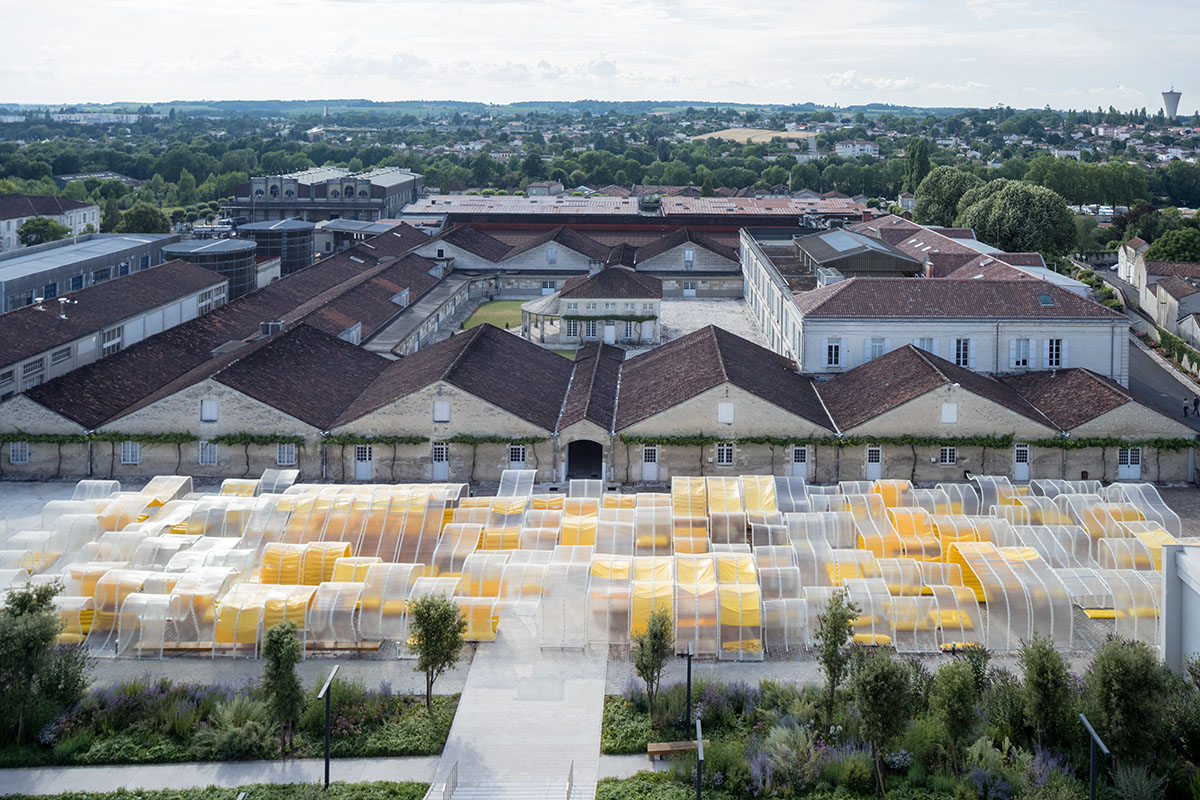
The Pavillon Martell is comprised of a translucent material, which is strong and watertight, the material is permeated by a soft, changing light which creates intriguing iridescent effects.
The rainbow reflections thus created are ideally suited to the architects’ aesthetics. This large pavilion, composed of flexible and organic shapes, is in harmony with environment, the architects defending the idea that "nature must prevail over architecture".
Covering a total of 2,350 square-metre space, the Pavilion also illustrates the transversality of technologies, uses and materials, which is a major focus for future projects developed by the Foundation. The studio completely filled the vast paved courtyard situated behind the Foundation during the first phase of work.

After the installation Par nature by Vincent Lamouroux, the Pavillon Martell de SelgasCano, conceived this time for the exterior of the building, brings a new architectural and international dimension to the Foundation.
"The Pavillon is emblematic of Martell’s long history. We are honoured to be the first architects commissioned to design a temporary installation for this very special site during restoration work on the interior of the building. As this will be the inaugural pavilion, our decisions and directions will impact on subsequent projects," said SelgasCano.
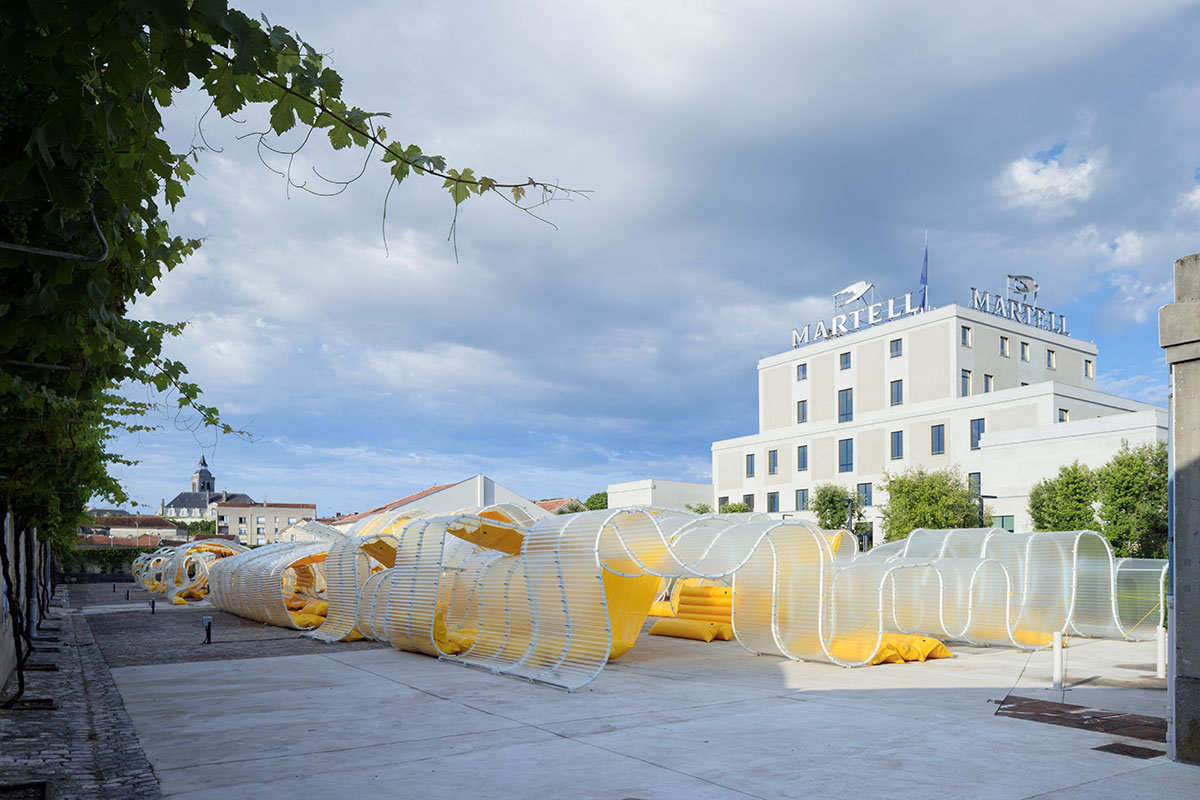
"We were given an extensive blank canvas and we wanted to set the tone by occupying the entire site with our pavilion, in the hope of inspiring future artists, architects and designers. The second important decision for us was to work with just one material. Owing to the vast dimensions of the project, the material needed to be accessible and available in large quantities."
"It also needed to be light, so as to be easy to dismantle and transport to its future location. Moreover, lightness has been a constant and integral aspect of our work, and we saw this project as a unique possibility to experiment and explore that concept further," added the studio.

The Pavillon Martell de SelgasCano will have multiple destinations. A limited portion will be kept at the Fondation d’entreprise Martell for archival and testimonial as well as practical purposes, and for visitor experiences in the Foundation’s future spaces. Another, larger part, will be reinstalled abroad within the framework of a social and community initiative.
Inflatable seats installed in the structure, attached by straps, will allow visitors to sit, lean, or stretch out in the context of workshops, concerts, presentations, conferences, markets, games, moments of relaxation, wanderings, etc.

From summer 2017, visitors will be able to enjoy creation and performance-based experiences with invited designers including Atelier W110 and 71bis, and artistic partners such as the Abbaye aux Dames.

"It is specifically designed for the large dimensions of the space – 26 x 90 metres," explained SelgasCano.
"Another concept we typically like to work with is “off-the-shelf”. We thus started to look for the lightest and most cost-effective materials on the market. We found what we were looking for hidden away in the catalogue of Onduline, a leading French construction company with a worldwide presence."
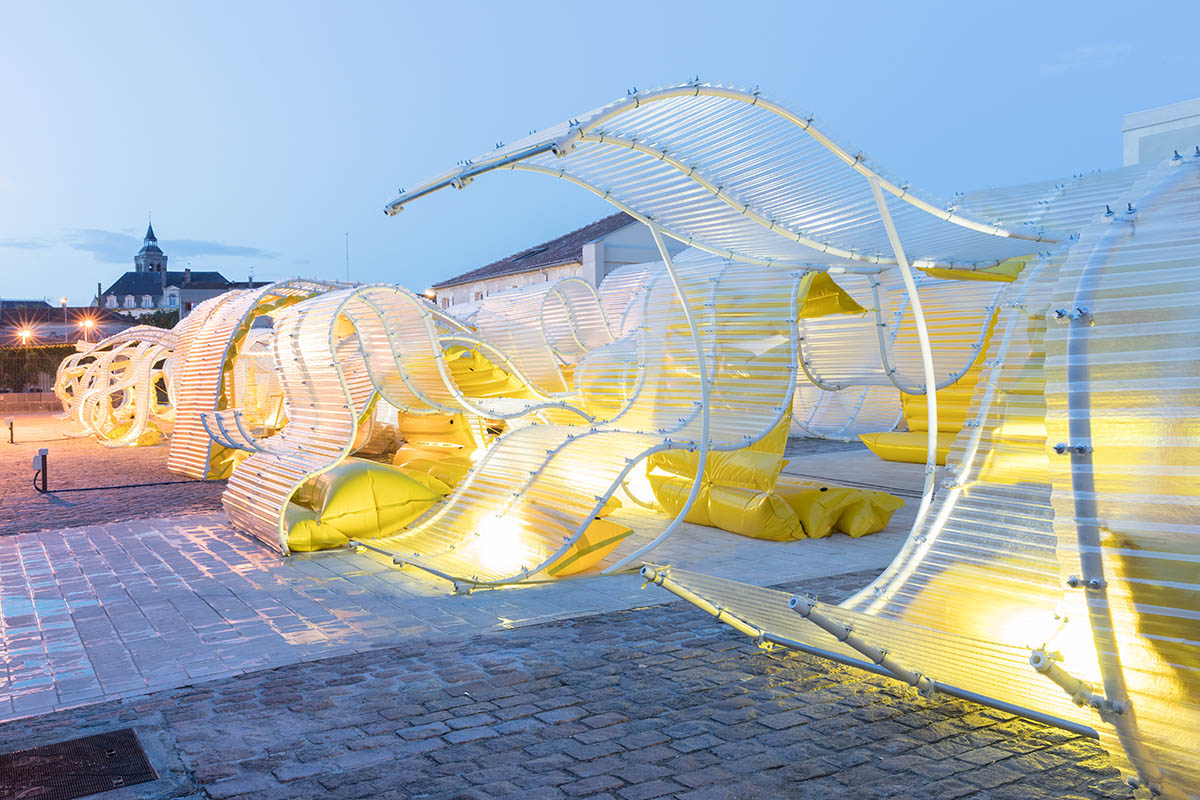
"This was a roll, a very thin roll, just 1 mm thick, made with polyester and fibreglass. Its appearance and thinness reminded us of traditional Japanese rice paper."
"Suddenly, the whole exercise became about discovering a way to work with paper – rice paper, fibreglass paper – and finding a way to play with its shape so as to make it as rigid as possible."
"We realized that this was a very naïve and simple process, almost like absentmindedly fiddling with a strip of paper during a meeting, and with this vague pastime we ended up creating a vast paper forest which you could enter, walk around and get lost in," detailed the studio.
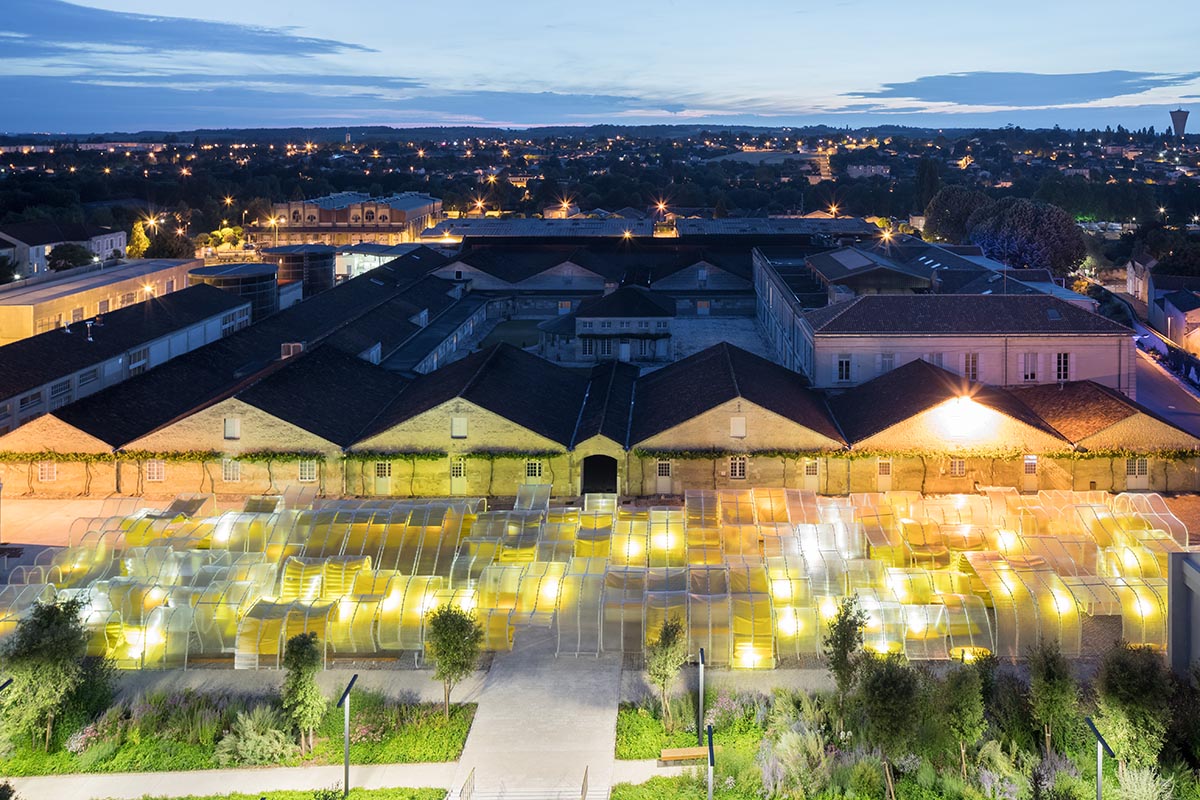
The first project in France by the duo of José Selgas and Lucìa Cano, this exterior pavilion is comprised of modules constructed from hi-tech materials, which will house specific activities prefiguring the Foundation’s future schedule of events.
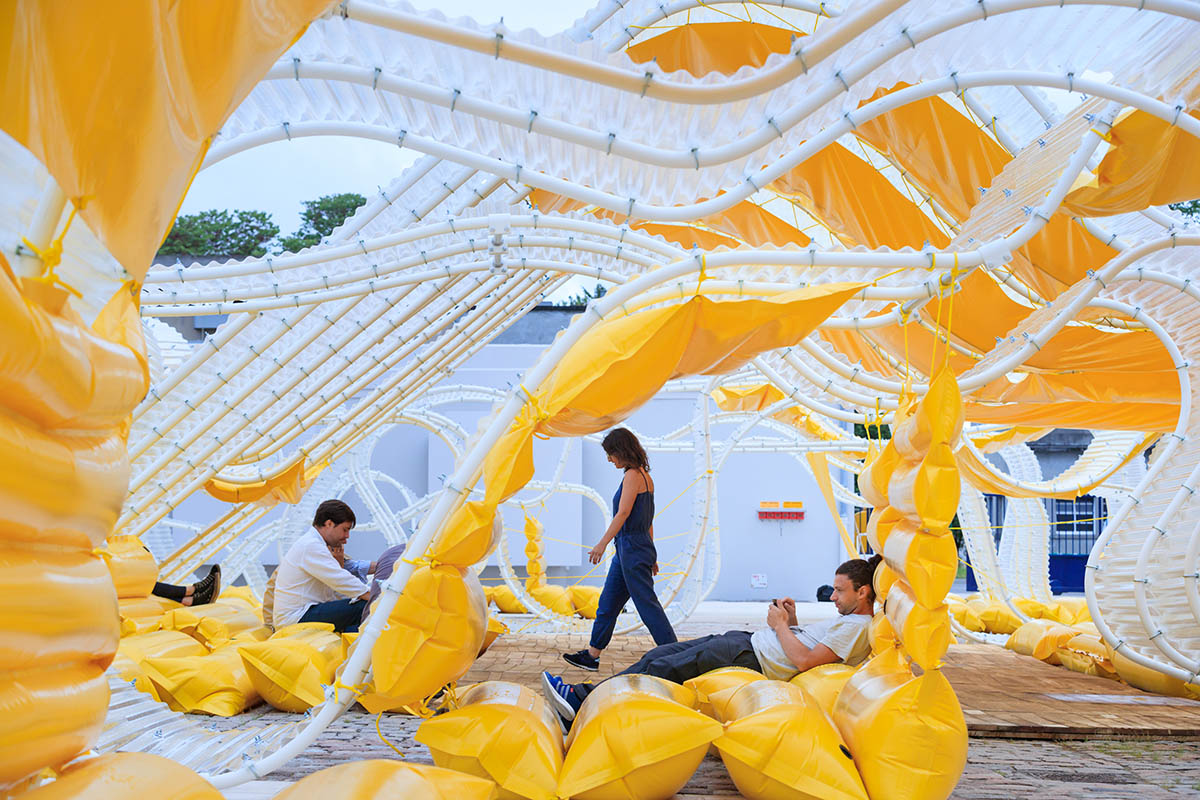
"Obviously, when we had to make it real, buildable, we leaned on a couple of additional materials, like steel bars adapted to the paper shape, and – as we couldn’t touch the courtyard floor – we added some yellow cushions filled with water to prevent the paper from blowing away... But we still let it blow a little, in a gentle vibration that perfectly expresses the lightness of the entity," added SelgasCano.
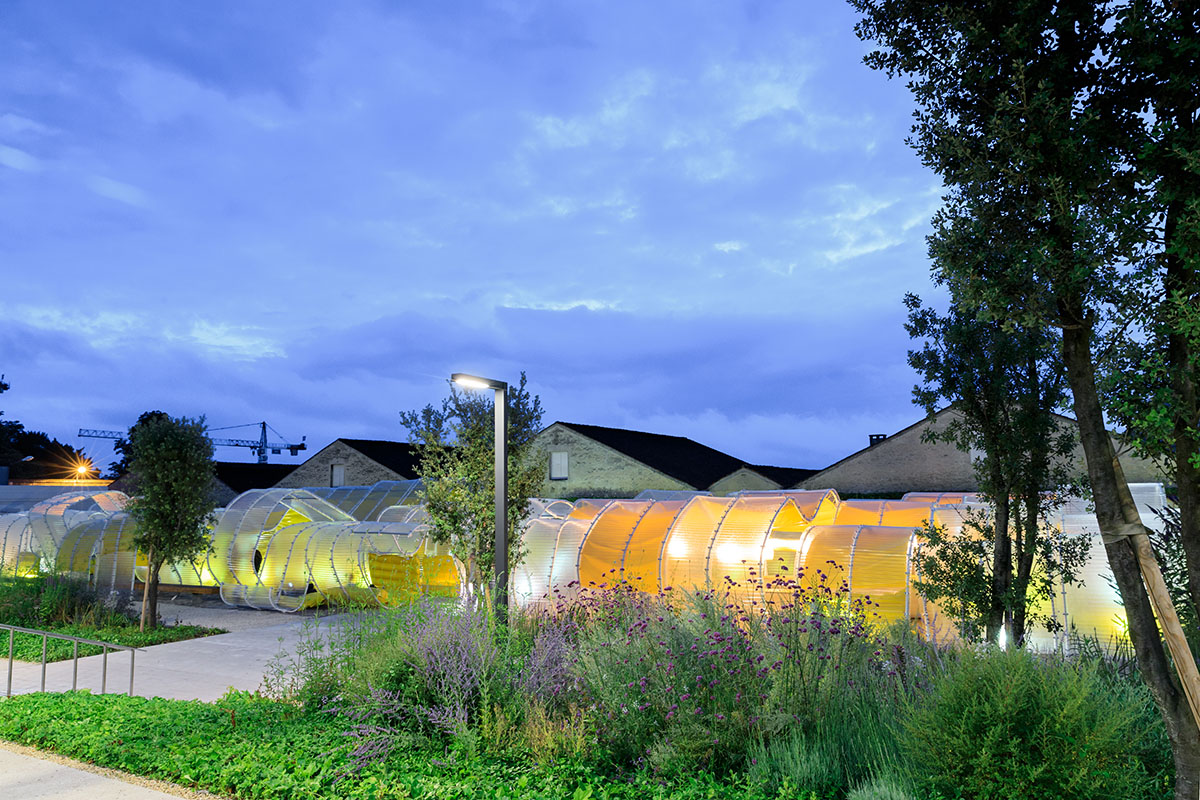
SelgasCano has won numerous private and public commissions, among them the Silicon House in Madrid (2007), the Office in the Woods in Madrid (2009), the El 'B' Cartagena Auditorium and Congress Centre in Murcia (2011), and the Mérida Factory in Mérida (2011). In 2015, the architects performed the restoration of Second Home in London.
They are currently working on the Plasencia Convention Centre and auditorium in Cáceres, the Pip House in Laurel Canyon in Los Angeles, the renovation of Texas Square in Oranjestad on the island of Aruba, and the La Canaria house in Los Angeles.
All images © Iwan Baan
> via Fondation Martell
